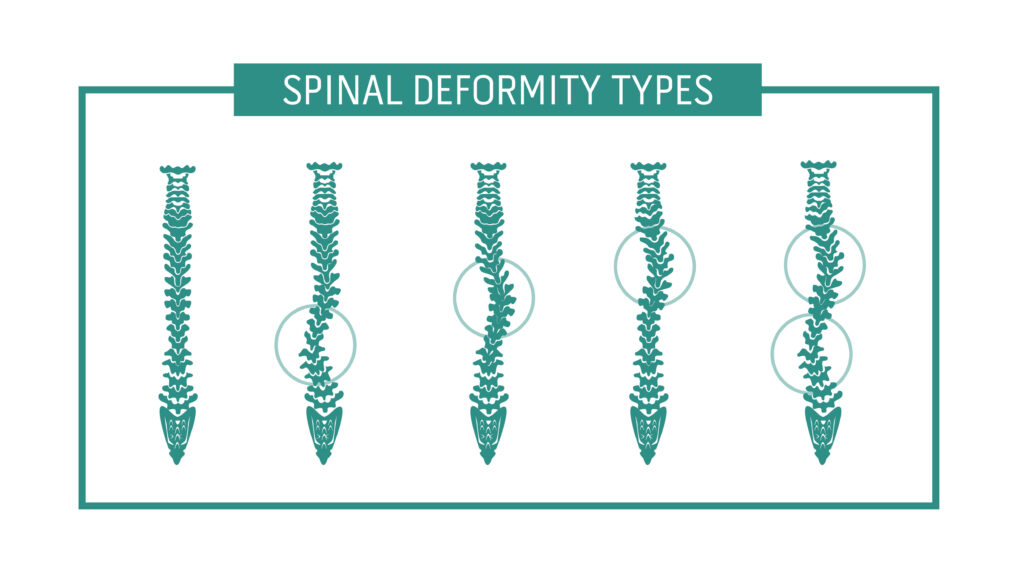Spine Deformity

The spine plays a crucial role in supporting our body’s structure and movement. Any abnormal curvature or rotation in the spine is referred to as a spinal deformity. These deformities can arise from various causes, including congenital conditions, aging, degeneration, or trauma. Spinal deformities like scoliosis, kyphosis, and lordosis can lead to pain, mobility issues, and neurological problems.
Types of Spinal Deformities
Scoliosis: A sideways curvature of the spine, often appearing as an ‘S’ or ‘C’ shape when viewed from the front.
Kyphosis: An excessive forward curvature of the upper back, creating a hunched appearance.
Lordosis: An inward curvature of the lower back, causing the spine to arch more than usual.
Symptoms
Symptoms of spinal deformities can vary depending on the type and severity of the deformity and may include:
- Pain, often localized to the affected area.
- Difficulty walking or maintaining balance.
- Visible spinal curvature, such as a hunched posture.
- No symptoms in mild cases.
Diagnosis
Diagnosis typically involves a physical examination and imaging tests like X-rays, MRI, or CT scans to assess the spinal structure and identify the underlying cause of the deformity.
Treatment Options
Treatment aims to alleviate pain, improve spinal function, and prevent further deterioration.
Nonsurgical Treatment: Options may include physical therapy, bracing, and pain management techniques.
Surgical Treatment: Surgery may be considered for severe or progressive deformities, involving spinal fusion and instrumentation to correct and stabilize the spine.
When is Surgery Necessary?
Surgery may be recommended if the deformity causes severe pain, organ compression, or neurological deficits that do not respond to conservative treatments. The procedure involves realigning the spine and stabilizing it with hardware like screws and rods.
Risk Factors
Risk factors for developing spinal deformities include genetic conditions, osteoporosis, injury, poor posture, and certain medical conditions affecting muscle or bone health.
Treatment Across Age Groups
Children: Nonsurgical treatments like bracing are often used to guide spine growth and alignment.
Adults: Treatment focuses on managing symptoms and may include bracing, physical therapy, or surgery for severe cases.
Elderly: Osteoporosis-related deformities may be managed with medication, hormone replacement therapy, or bracing to alleviate symptoms.
Understanding and early intervention are essential for managing spinal deformities effectively. A multidisciplinary approach involving orthopedic surgeons, neurosurgeons, and physical therapists can provide comprehensive care tailored to individual needs.

